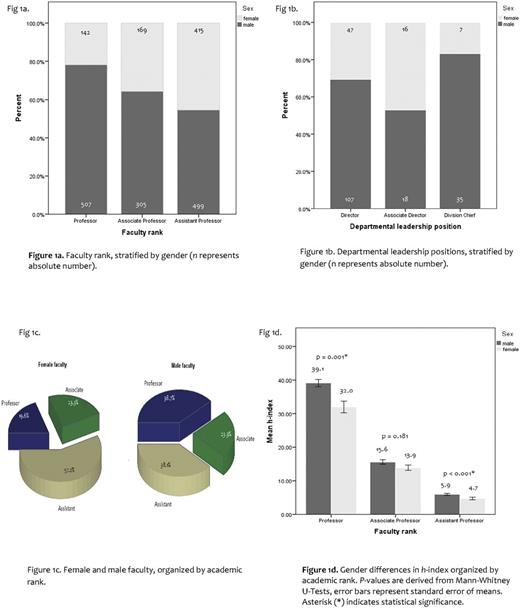Abstract
Objective: Gender disparity in academic medicine remains a contentious topic of debate. Female faculty is underrepresented in leadership positions and reportedly has fewer publications, lower h-indices and grant funding. We sought to study the gender differences in faculty rank, departmental leadership and research output amongst academic hematologists/oncologists in United States.
Methods: We obtained a list of clinical faculty at 146 hematology/oncology fellowship programs using Fellowship and Residency Electronic Interactive Database (FREIDA) and program websites( February 2017). We further collected data on demographics, academic rank and research output for each faculty member on our list by searching Doximity and Scopus databases.
Results: 2161 academic hematologists/oncologists were included in the final analysis. Women were particularly underrepresented at senior faculty ranks, making up one-fifth (22%; n=142) of full professors, one-third (36%; n=169) of associate professors, and half (45%, n=415) of assistant professors. 30% (n=70) of departmental leaders were women. Female faculty on average had a lower mean h-index (12.1 versus 20.9; p<0.001), but also had fewer years of professional experience.
Conclusion: Gender disparity exists in senior ranks of academic hematology/oncology. This may be partly related to their lower levels of scholarly productivity, especially in early career years. Barriers to academic advancement of women in hematology/oncology need to be explored and adequately addressed.
No relevant conflicts of interest to declare.
Author notes
Asterisk with author names denotes non-ASH members.


This feature is available to Subscribers Only
Sign In or Create an Account Close Modal